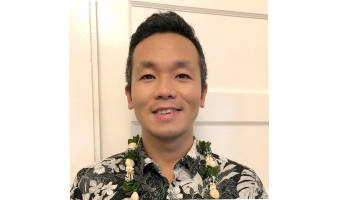Despite the massive global disruptions caused by the COVID-19 pandemic, the county’s ongoing recovery response to the 2018 Kilauea eruption is not expected to be delayed, officials say.
Disaster Recovery Officer Douglas Le said none of the several projects related to the county’s Kilauea recovery efforts have been placed on hold because of the coronavirus, and none of the response team’s planned deliverables have necessarily been affected.
“The (U.S. Department of Housing and Urban Development) has issued guidance on this issue, and, for example, grantees were given an additional 90 days to apply,” Le said. “So we had an action plan that was due on June 2, and now it’s due on Aug. 31. I don’t know that we’ll need to take that long — it suits the island’s needs to get this done as soon as possible.”
Le said the county’s recovery team is working from home and continues to effectively operate through online meetings.
Nor will construction projects be necessarily impeded. Gov. David Ige’s emergency proclamation that orders nonessential businesses to close lists construction as an essential business that can continue to operate, although Le added that any precautions among construction crews to prevent the spread of the coronavirus are the responsibility of the construction companies contracted by the county.
However, the pandemic also is not likely to accelerate recovery projects, either. While the stay-at-home orders have reduced traffic across the Big Island, Le said the county will probably not be able to take advantage of the low traffic to carry out otherwise-disruptive road improvement projects.
“We’ve looked at it,” Le said. “But from the recovery side, we still have to go through a lot of pre-projects for these things, a lot of applications that the HUD has to manage. We have no bearing on how fast that process can go.”
Le said the recovery process likely will continue on schedule, with an $83.8 million HUD grant contingent on completing an action plan by the end of August. None of that money, he said, should be jeopardized or superseded by the billions in federal coronavirus relief being disbursed around the country.
“In my experience, federal relief dollars are allocated to specific events,” Le said. “It’s not like anyone would want to get rid of previously allocated money.”
Le’s comments might alleviate concerns from Puna residents who have endured setbacks and delays in the recovery process for the better part of two years.
Deb Smith, owner of a property in Kapoho that has been cut off by lava since the eruption, said the recovery process has seemed to be at a standstill.
“We’re still hiking out here every day, and it’s a great place to self-isolate,” Smith said. “But we’re still trying to go home after two years.”
Amedeo Markoff, acting president of the Mainstreet Pahoa Association, effusively praised the recovery team and Le for their continued efforts, but urged the county not to slow its work.
“It’s our fervent hope that the county continues to expedite this recovery process that’s already been delayed by two years,” Markoff said. “It behooves everyone to help us get back on our feet as much as possible, especially during this time of economic hardship.”
Email Michael Brestovansky at mbrestovansky@hawaiitribune-herald.com.






